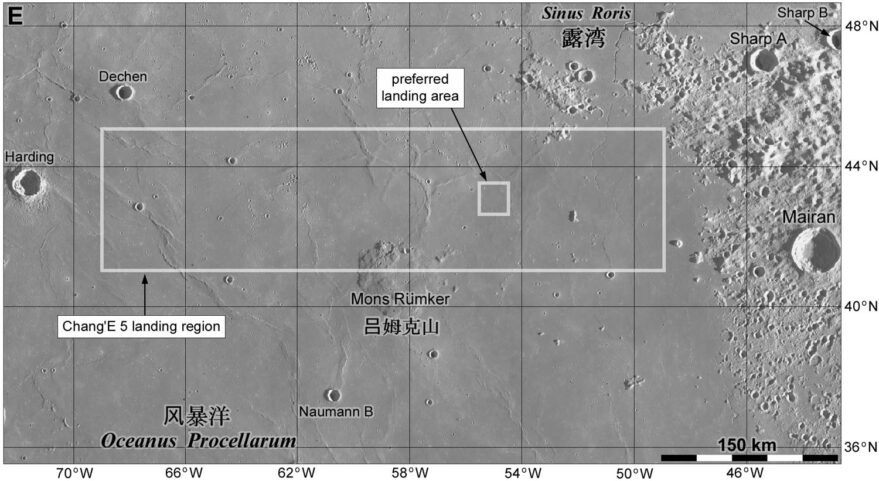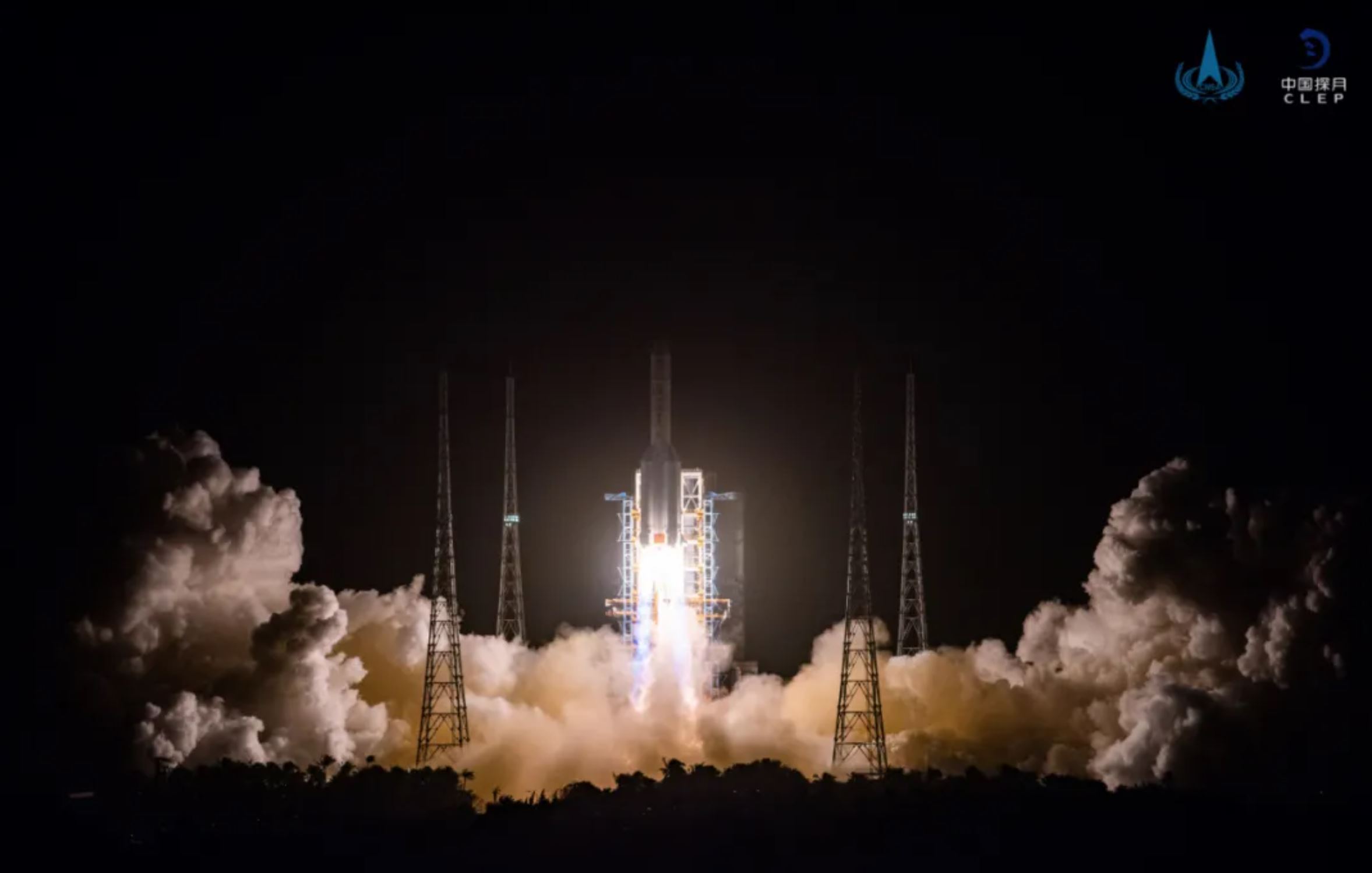Products You May Like
HELSINKI — A Long March 5 rocket launched China’s Chang’e-5 spacecraft Monday to kick off a 23-day mission to deliver the first lunar samples to Earth since the 1970s.
The heavy-lift Long March 5 lifted off from the Wenchang Satellite Launch Center at 3:30 p.m. Eastern. The Chang’e-5 spacecraft was announced to have successfully entered its predetermined orbit around 4:45 p.m., following deployment of solar arrays. The 8.2-ton Chang’e-5 spacecraft is to begin an estimated 112-hour journey to the moon.
The mission aims to collect the youngest samples so far obtained from the moon and later land in Siziwang Banner, Inner Mongolia, around Dec. 15-16. Samples will then be transferred to specially developed facilities for handling, analyzing and storing the lunar material.
A successful mission would make China only the third country to deliver lunar samples to Earth, after the U.S. Apollo crewed program and Soviet robotic Luna missions of the 1960s and 1970s.
Major challenges following launch include carrying out liftoff of an ascent vehicle from atop the lander spacecraft on another planetary body, as well as a later automated lunar orbit and rendezvous around 380,000 kilometers from Earth.
Launch preparations at Wenchang have been ongoing since mid-September. The fourth and mostly recent Long March 5 mission rocket successfully launched the Tianwen-1 Mars spacecraft in July.
The Failure of the second Long March 5 launch in July 2017 meant a delay of three years for Chang’e-5, having been scheduled to launch later that year.
Mission timeline
A detailed timeline of the mission has not been released by China. The spacecraft is expected to be inserted into a roughly 200-kilometer altitude lunar orbit shortly after sunrise over the designated Mons Rümker on November 27.
The landing attempt is expected in the days following. Chinese language journals detailing the Chang’e project technology roadmap state that sampling activities will last around two Earth days. Around two kilograms of drilled and scooped samples will then be sent into lunar orbit by a roughly 500-kilogram ascent vehicle. A two-day period will conclude with rendezvous and docking between the ascent and service modules. The samples will be transferred to a reentry capsule attached the service module.
The service will then separate from the ascent vehicle and remain in lunar orbit until an opportune window to return to Earth. The reentry vehicle will separate from the service module around 5,000 kilometers from Earth. A skip reentry, involving bouncing off the atmosphere—a maneuver tested by the Chang’e-5 T1 mission in 2014—to deal with the high-velocity return from the moon will follow. ESA tracking stations will support this critical phase as the spacecraft attempts reentry.
Samples will then be transferred to specially constructed facilities for handling, analyzing and storing the lunar material.
Science goals
The stated landing area surrounds Mons Rümker, a volcanic peak situated in the Oceanus Procellarum region of western edge of the near side of the moon. The area may contain geological units of basaltic rock as young as around 1.21 billion years old. By comparison samples brought to Earth by Apollo astronauts are aged between 3.1 and 4.4 billion years old.
It is hoped that such geologically young samples, if returned, will allow radiometric dating of the samples to verify the age of the area. It could also then provide valuable information about the apparent late-stage volcanism needed to create the relatively new units of rock. The combination of orbital observations of cratering and accurate dating of samples would both help constrain chronologies on the moon and be applied as a reference for terrestrial bodies across the solar system.
The Chang’e-5 lander also carries a panoramic camera, lunar penetrating radar and imaging spectrometer for observation and analysis of the landing area.

Backup mission, future goals
Chang’e-6 is a sample return spacecraft engineered at the same time as Chang’e-5 to provide a backup in the event of failure. Success of Chang’e-5 would however see Chang’e-6 repurposed for a landing at the lunar south pole around 2023.
China has stated it will then proceed into an extended phase of lunar exploration involving Chang’e-7 and further lunar landing missions. The aim will be to establish an ‘international lunar research station’ in the mid-to-late 2020s as a precursor to crewed landings.
Sample return technology and experience developed through Chang’e-5 is also to be utilized for planned near Earth asteroid and Mars sample return missions later in the decade. The complexity of the Chang’e-5 mission profile is considered by observers to be related to future crewed lunar landing ambitions.
